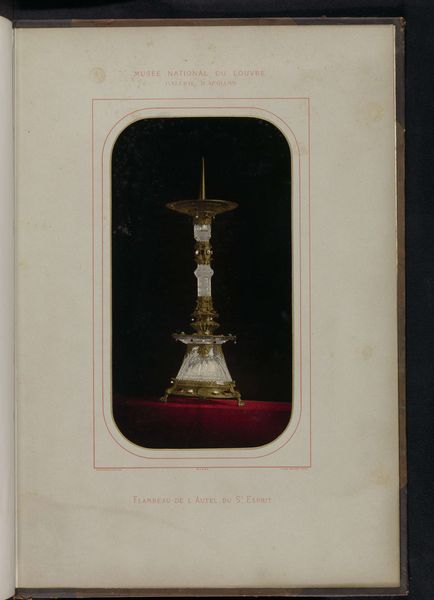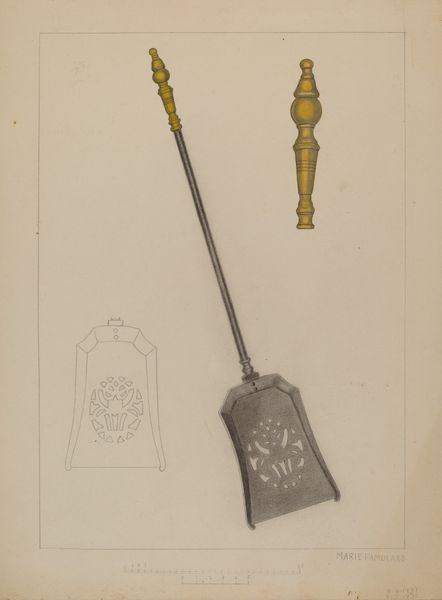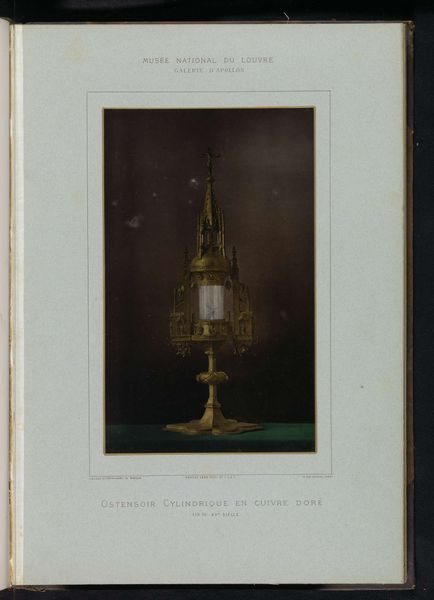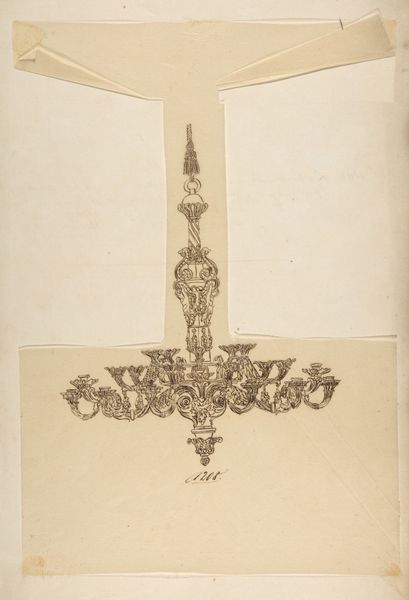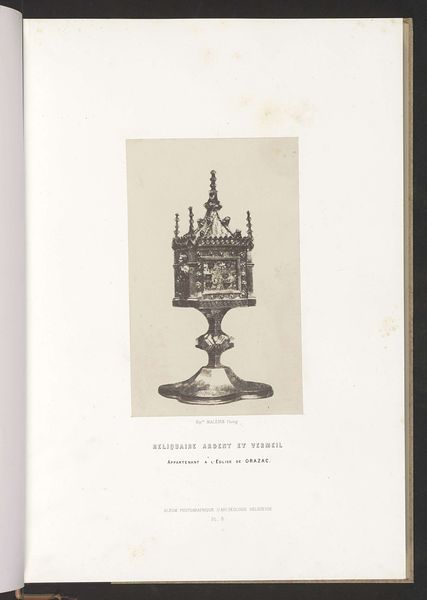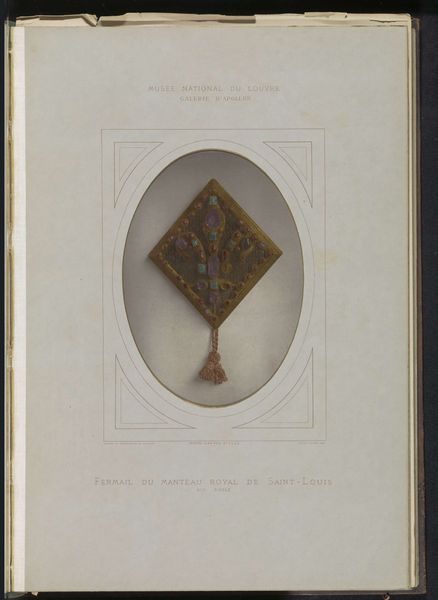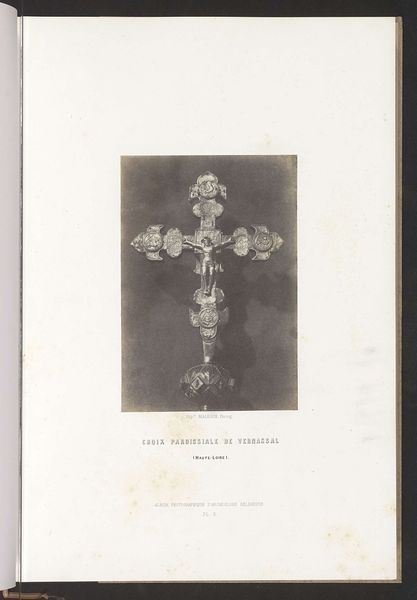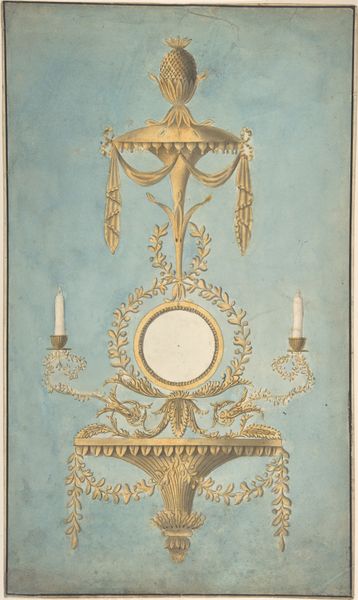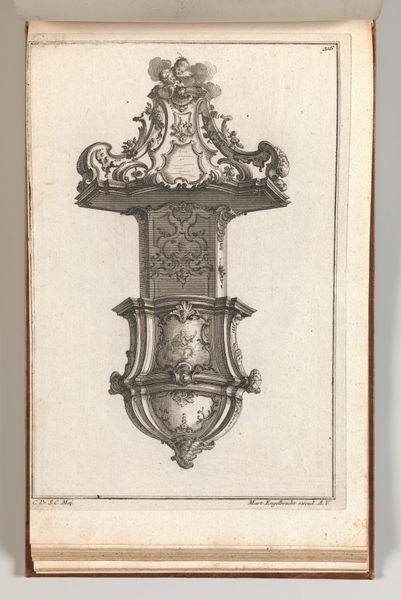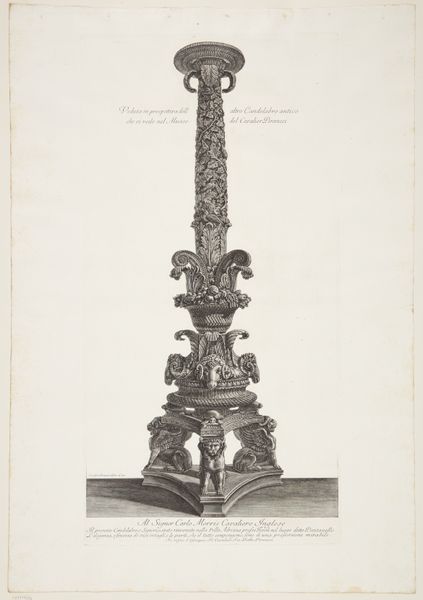
print, metal, photography
#
water colours
# print
#
metal
#
photography
#
coloured pencil
#
mixed media
Dimensions: height 297 mm, width 168 mm
Copyright: Rijks Museum: Open Domain
Here's a photographic rendering of the Scepter of King Charles V of France, captured by Léon Vidal. Photography in the 19th century was a fascinating mix of science, craft, and early industrial processes. Vidal, a pioneer of color photography, likely used a complex chemical process to achieve this image, layering dyes to capture the subtle hues of the scepter's gold and the luster of its pearls. Consider the cultural significance imbued in the scepter itself, a symbol of power and authority crafted through skilled metalworking. Vidal’s photograph adds another layer, democratizing access to this royal object through mass reproduction. The photograph's inherent qualities: its luminosity, the way it captures texture and form, and its ability to circulate widely makes us consider how photography could challenge traditional distinctions between documentation, fine art, and craft. It underscores the importance of materials, making, and context in understanding an artwork's full meaning.
Comments
No comments
Be the first to comment and join the conversation on the ultimate creative platform.
